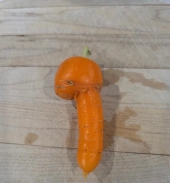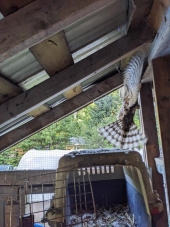I lost my entire crop (from 2 trees) of hazelnuts this year. 3 pair of Stellar Jays started taking them even before most nuts were mature! I have blueberry bushes that are not bothered by the jays until, it seems, the Kestrels, in a nest box I put on the corner of the orchard, have fledged. I wish I could convince the kestrels to spend more time over the orchard even after the babies have fledged.
The other issue I have are voles, seemingly lots and lots of voles. I have lots of coyotes that spend a great deal of time here, and a barn owl pair that nest in one of the barns. They use it as their dining room year round, so I am certain they also help a lot with vole (and other rodent) mitigation. Still, I think I have grown the vole population by growing them lots of high quality food, and fencing the deer and elk out of 2 growing areas, which inhibits the coyotes and owls (on one small garden) from ready access to the voles. about a month ago I decided I would rather the deer eat my bean plants than the voles, and I took down one panel of my veggie garden. This may have worked as the bean plants have regrown and are looking good (knock wood).
I have lots of wasps here. Mostly I have lots of paper-wasp nests, but I also curated a nest that fell from the eaves so they could still live in it. That lasted about 2 months and/but they moved on or some other insects drove them out of that nest. I appreciate the wasps not only for all the pollination, but for controlling various harmful larvae, etc.












